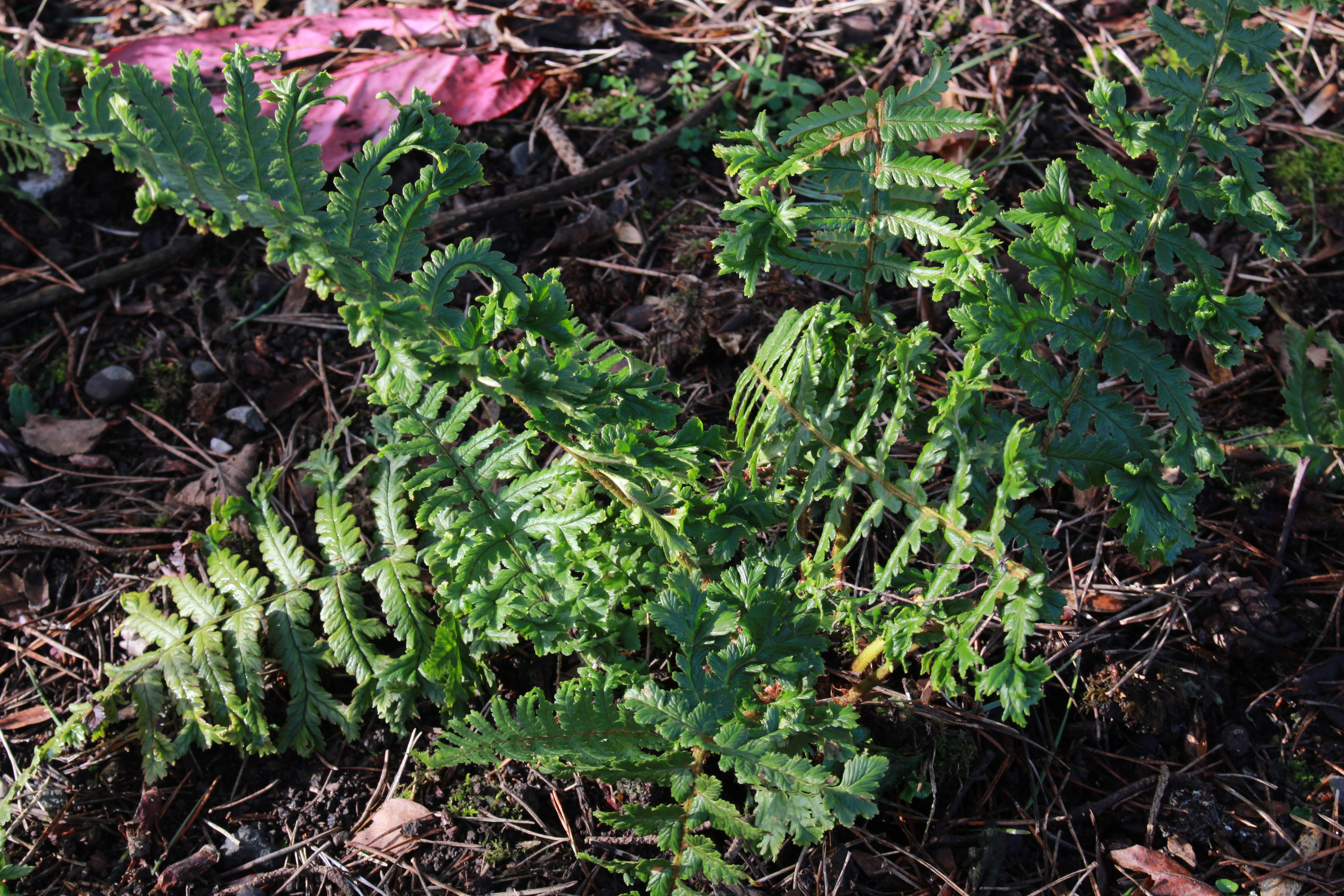Dryopteris affinis 'Cristata'
Approx. 0.5 litre pot
About this cultivar:
Dryopteris affinis 'Cristata' is a robust fern with rosettes of erect arching bipinnate fronds, handsomely crested at the tips of the fronds and pinnae. Sometimes called 'The King', which is quite descriptive. Grow like all ferns, but why not try a pot? Like a throne....
I read it is semi-evergreen but with us it is evergreen 99% of the time. You can cut it back if you like seeing the fronds emerge. Unsurprisingly has the Royal Horticultural Society Award of Garden Merit (RHS AGM).
Cristata is derived from the Latin word cristatus meaning 'tufted' or 'crested'.
The species Dryopteris affinis is native to western and southern Europe and southwestern Asia. The specific epithet affinis means "similar to others". It is most abundant in areas with high humidity, such as the British Isles and western France; in the Mediterranean region and the Caucasus it is confined to high altitudes. It commonly grows on moist soils in woodlands.
- Position: Full shade, partial shade
- Soil: Almost any soil, grows well in Ballyrobert
- Flowers: -
- Other features: Grows well in Ballyrobert, Woodland Plant, Dappled Shade or Full Shade Loving, Interesting Foliage or Fruit, Royal Horticultural Society Award of Garden Merit (RHS AGM)
- Hardiness: H5 - Hardy in most places throughout the UK even in severe winters (-15 to -10°C), Fully hardy - grows well in Ballyrobert!
- Habit: Tufted, Clump forming
- Foliage: Evergreen
- Height: 75 - 90 cm (2.5 - 3 ft)
- Spread: 75 - 90 cm (2.5 - 3 ft)
- Time to full growth: 5 to 10 years
- Plant type: Herbaceous Perennial, fern
- Colour: Green
- Goes well with: Shade
About this genus:
Dryopteris is a fern genus of 225 species from around the world that give us the majority of our great garden ferns. The genus name comes from the Greek words drys (tree) and pteris (fern) in possible reference to this fern's typical habitat in woodland areas. It is a good idea to put Dryopteris (male ferns) near Athyriums (lady ferns) for reasons that (I hope) are obvious.
Dryopteris species come in a variety of shapes and sizes. Most gardeners assume that all ferns are green but Dryopteris species have variation in that regard - which ironically makes many people think they a dying or drying out! - once a week I have a customer telling me they need watered! The new growth on some species may be copper or cinnamon or even black.
Like most garden ferns, Dryopteris plants prefer light shade, almost full shade. Soil wise - anything that isn't too extreme. How to use them? Well... try shady areas!


